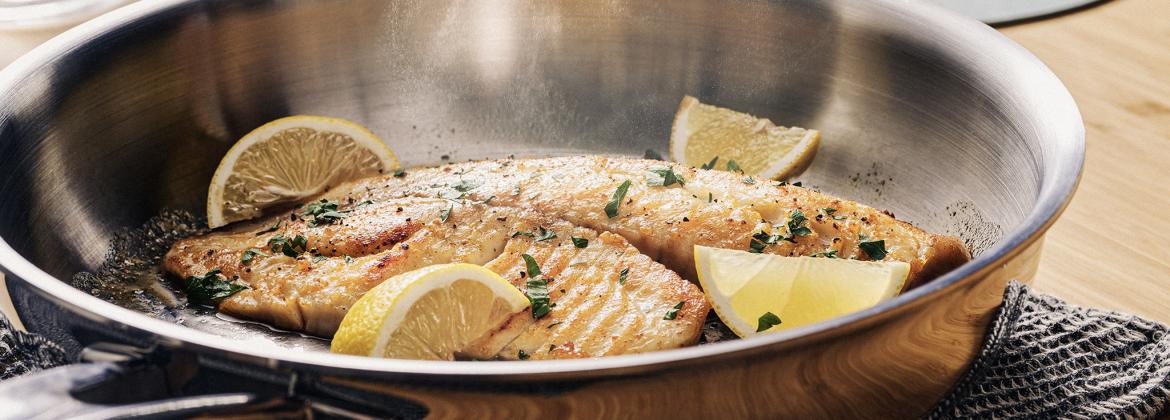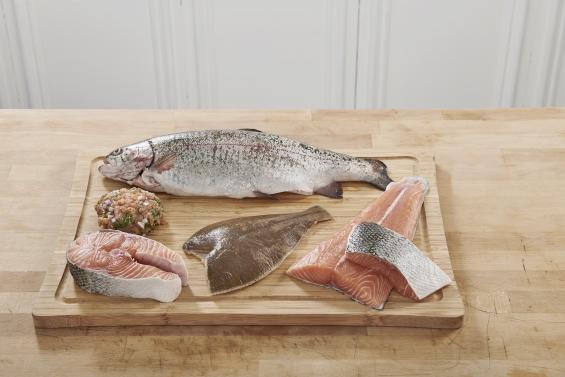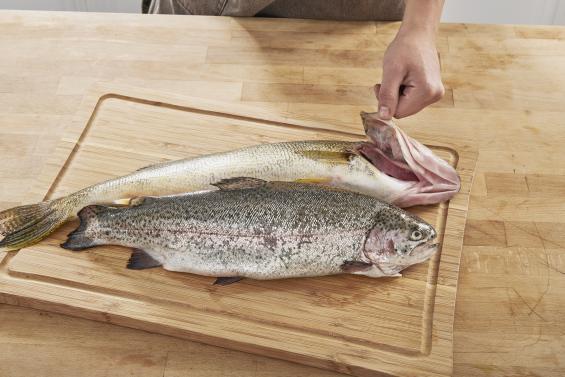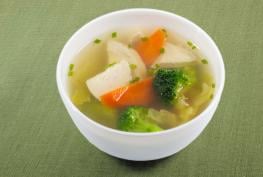Print or share this article
Fish is a protein food that contains important nutrients. Learn about different types of fish and how to prepare them.
On this page
Types of fish
One way to categorize fish is by its fat content. Lean fish often have a lighter flesh colour. Fatty fish can typically be identified by their darker flesh. A species’ diet is the main factor that influences the fat content of the fish.
Common types of lean fish
- Cod
- Bass
- Perch
- Halibut
- Pickerel
Common types of fatty fish
- Trout
- Carp
- Salmon
- Mackerel
Different cuts of fish
Fish is often sliced into fillets. These fillets can retain the skin, or can have no skin. Other cuts are also available, such as:
- whole fish
- butterfly fillets, which are fillets still attached to the spine
- steaks, sometimes called darnes, which contain bones and skin
What to look for when selecting fish
Fresh fish
When selecting fresh whole fish, look for:
- bright pink or red gills (not brown)
- clear and plump eyes (not cloudy or milky)
When choosing fresh fish portions, select:
- a texture that’s firm to the touch
- portions that are free from holes or bruising
- a sweet, fresh, salty smell; not a strong or unpleasant fishy smell
Frozen fish
Flash-frozen fish are often frozen at sea or at the shore to maximize freshness. Frozen fish is often a budget-friendly option.
Tip: When buying frozen fish, choose options with little to no added sodium. Use food labels to compare different products.
Canned fish
Canned fish can be convenient and versatile.
Tip: When buying canned fish, choose options with little to no added sodium. Use food labels to compare different products.
Canned fish is pre-cooked and is available in many forms, including:
- flakes
- chunks
- fillets (for smaller types of fish)
Canned fish is ready to eat and is a quick addition to meals and snacks like tuna salad wraps.
If you are buying canned tuna, limit your mercury exposure by opting for “light” tuna, which can include different tuna species such as skipjack, yellowfin, and tongol. Learn more about mercury in fish in Canada.
Cooking methods and tips
Now that you’ve selected your type and cut of fish, consider which cooking method will allow you to make the most of your fish. Some popular methods for cooking fish are:
- grilling
- baking
- searing
- roasting
- poaching
- adding to chowders and stews
Cooking tips
- To prevent the fish from sticking to the cooking surface, pat the fish dry with a paper towel before cooking.
- When searing or grilling, use fish portions with skin. Begin cooking skin-side down. The skin adds stability to the delicate flesh and helps protect from overcooking. Skin can be removed after cooking according to your preference.
- Always cook fish to an internal temperature of 70 °C (158 °F).
Recipes to explore
Fish is a versatile ingredient that can be substituted into many recipes. If you’re looking for ideas, try the Canada’s food guide fish recipes.
Experiment with fish as an ingredient in your dishes. It generally cooks quickly and is a delicious way to enjoy protein foods as part of a healthy eating pattern.






